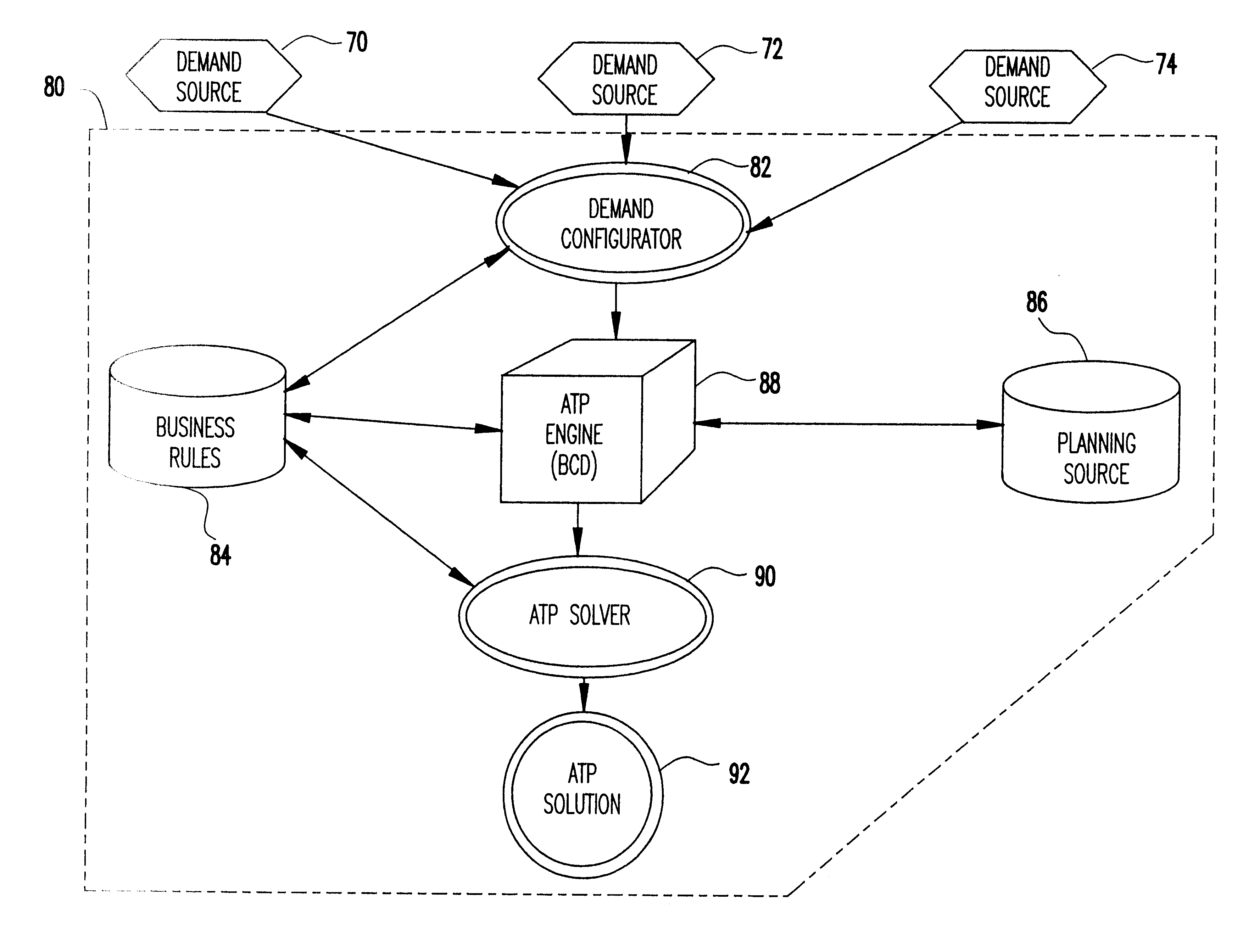Regenerative available to promise
a technology of regenerative resources and promise, applied in the field of computer implemented planning resources and decision support tools, can solve the problems of difficult to predict the availability of components/parts, complicating the whole manufacturing scenario, and time-consuming and very likely simultaneous attempt to minimize byproduct manufacturing
- Summary
- Abstract
- Description
- Claims
- Application Information
AI Technical Summary
Problems solved by technology
Method used
Image
Examples
Embodiment Construction
Referring now to the drawings, and more particularly to FIG. 2, which is behavioral example of a preferred embodiment regenerative available to promise (ATP) system. This Example includes a table 60 for supply, a supply allocation table 62, a demand table 64, and a PROFIT ATP table 66.
As can be seen from supply table 60, periodic output, e.g., day by day, is 100 pieces. For the present invention, supply is allocated in allocation table 62 to user-defined forecast groups, e.g., Forecast Group1 (containing for example high priority tier 1 customers) and Forecast Group2 (containing lower priority tier 3 customers). From demand table 64, there is a firm order at hand for 300 pieces in Period 2 placed by Forecast Group2 customers. Thus, the forecast allocation in Period 1 (80), Period 2 (80), Period 3 (50), Period 4 (50) and Period 5 (80) is used to satisfy the firm order of 300 pieces for Forecast Group2.
What remains available to promise from the preferred embodiment PROFIT ATP system, ...
PUM
 Login to View More
Login to View More Abstract
Description
Claims
Application Information
 Login to View More
Login to View More - R&D
- Intellectual Property
- Life Sciences
- Materials
- Tech Scout
- Unparalleled Data Quality
- Higher Quality Content
- 60% Fewer Hallucinations
Browse by: Latest US Patents, China's latest patents, Technical Efficacy Thesaurus, Application Domain, Technology Topic, Popular Technical Reports.
© 2025 PatSnap. All rights reserved.Legal|Privacy policy|Modern Slavery Act Transparency Statement|Sitemap|About US| Contact US: help@patsnap.com



